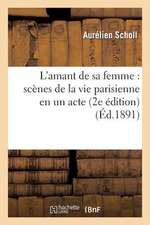European Dance since 1989: Communitas and the Other
Editat de Joanna Szymajdaen Limba Engleză Paperback – 15 mai 2014
Central Europe and the former Soviet Bloc countries were a major presence in dance – particularly theatrical dance – throughout the twentieth century. With the fragmentation of traditional structures in the final decade of the century came a range of aesthetic and ideological responses from dance practitioners. These ranged from attempts to reform classical ballet to struggles for autonomy from the state, and the nature of each was influenced by a set of contexts and circumstances particular to each country.
Each contribution covers the strategies of a different country’s dance practitioners, using a similar structure in order to invite comparisons. In general, they address:
- Historical context, showing the roots of contemporary dance forms
- The socio-political climates that influenced emerging companies and forms
- The relationships between aesthetic exploration and institutional patronage
- The practitioners who were central to the development of dance in each country
- A diagnosis of the current state of the art and how it has come about
| Toate formatele și edițiile | Preț | Express |
|---|---|---|
| Paperback (1) | 241.90 lei 6-8 săpt. | |
| Taylor & Francis – 15 mai 2014 | 241.90 lei 6-8 săpt. | |
| Hardback (1) | 678.14 lei 6-8 săpt. | |
| Taylor & Francis – 19 mai 2014 | 678.14 lei 6-8 săpt. |
Preț: 241.90 lei
Nou
Puncte Express: 363
Preț estimativ în valută:
46.29€ • 50.27$ • 38.89£
46.29€ • 50.27$ • 38.89£
Carte tipărită la comandă
Livrare economică 23 aprilie-07 mai
Preluare comenzi: 021 569.72.76
Specificații
ISBN-13: 9780415832137
ISBN-10: 0415832136
Pagini: 386
Ilustrații: black & white illustrations
Dimensiuni: 156 x 234 x 23 mm
Greutate: 0.54 kg
Ediția:New.
Editura: Taylor & Francis
Colecția Routledge
Locul publicării:Oxford, United Kingdom
ISBN-10: 0415832136
Pagini: 386
Ilustrații: black & white illustrations
Dimensiuni: 156 x 234 x 23 mm
Greutate: 0.54 kg
Ediția:New.
Editura: Taylor & Francis
Colecția Routledge
Locul publicării:Oxford, United Kingdom
Public țintă
Postgraduate and UndergraduateCuprins
Introduction (editorial) – Joanna Szymajda
Text written in Polish, English translation: Soren Gauger
Introduction (theoretical) – Ramsay Burt
Text written in English, Polish translation: Maria Kwiecień
1. The Polish periphery in 'native' Europe: towards the institutionalisation of dance – Anna Królica
Text written in Polish, English translation: Soren Gauger
2. Toward autonomy and professionalization: the process of negotiating the identity of Polish dance – Julia Hoczyk
Text written in Polish, English translation: Soren Gauger
3. Not quite – not right: Eastern/Western dance (on contemporary dance in Serbia) – Ana Vujanović
Text written in English, Polish translation: Artur Zapałowski
4. Evacuate the area: zero space – Mihaela Michailov
English translation: Vlad A. Arghir, Polish translation: Artur Zapałowski
5. Transformations of the dancing body in Estonian contemporary dance – Heili Einasto
Text written in English, Polish translation: Artur Zapałowski
6. The present absence: approaches to dance and choreography in Slovenian contemporary dance – Bojana Kunst
English translation: Urska Zajec, Polish translation: Artur Zapałowski
7. Contemporary dance in Lithuania – Vita Mozūraitė
Text written in English, Polish translation: Artur Zapałowski
8. Communitas and the other – on Hungarian (contemporary) dance after 1989 – Annamária Szoboszlai
Text written in English, Polish translation: Artur Zapałowski
9. Czech dance: from amnesia to emancipation – Jana Návratová
Polish translation: Magdalena Stojowska, English translation: Soren Gauger
10. Russian contemporary dance – Natalia Kuryumova
Polish translation: Agnieszka Sowińska, English translation: Soren Gauger
11. Body, identity and community: dance in Bulgaria after 1989 – Mira Todorova
Text written in English, Polish translation: Artur Zapałowski
12. Let´s work (differently)! 6MONTHS1LOCATION and the resonances between production, labor, thought, dance, and community – Stefan Apostolou-Hölscher
Text written in English, Polish translation: Artur Zapałowski
Text written in Polish, English translation: Soren Gauger
Introduction (theoretical) – Ramsay Burt
Text written in English, Polish translation: Maria Kwiecień
1. The Polish periphery in 'native' Europe: towards the institutionalisation of dance – Anna Królica
Text written in Polish, English translation: Soren Gauger
2. Toward autonomy and professionalization: the process of negotiating the identity of Polish dance – Julia Hoczyk
Text written in Polish, English translation: Soren Gauger
3. Not quite – not right: Eastern/Western dance (on contemporary dance in Serbia) – Ana Vujanović
Text written in English, Polish translation: Artur Zapałowski
4. Evacuate the area: zero space – Mihaela Michailov
English translation: Vlad A. Arghir, Polish translation: Artur Zapałowski
5. Transformations of the dancing body in Estonian contemporary dance – Heili Einasto
Text written in English, Polish translation: Artur Zapałowski
6. The present absence: approaches to dance and choreography in Slovenian contemporary dance – Bojana Kunst
English translation: Urska Zajec, Polish translation: Artur Zapałowski
7. Contemporary dance in Lithuania – Vita Mozūraitė
Text written in English, Polish translation: Artur Zapałowski
8. Communitas and the other – on Hungarian (contemporary) dance after 1989 – Annamária Szoboszlai
Text written in English, Polish translation: Artur Zapałowski
9. Czech dance: from amnesia to emancipation – Jana Návratová
Polish translation: Magdalena Stojowska, English translation: Soren Gauger
10. Russian contemporary dance – Natalia Kuryumova
Polish translation: Agnieszka Sowińska, English translation: Soren Gauger
11. Body, identity and community: dance in Bulgaria after 1989 – Mira Todorova
Text written in English, Polish translation: Artur Zapałowski
12. Let´s work (differently)! 6MONTHS1LOCATION and the resonances between production, labor, thought, dance, and community – Stefan Apostolou-Hölscher
Text written in English, Polish translation: Artur Zapałowski
Descriere
This edited collection charts the development of contemporary dance in Central and Eastern Europe since the literal and symbolic revolutions of 1989.
Central Europe and the former Soviet Bloc countries were a major presence in dance – particularly theatrical dance – throughout the twentieth century. With the fragmentation of traditional structures in the final decade of the century came a range of aesthetic and ideological responses from dance practitioners. These ranged from attempts to reform classical ballet to struggles for autonomy from the state, and the nature of each was influenced by a set of contexts and circumstances particular to each country.
Central Europe and the former Soviet Bloc countries were a major presence in dance – particularly theatrical dance – throughout the twentieth century. With the fragmentation of traditional structures in the final decade of the century came a range of aesthetic and ideological responses from dance practitioners. These ranged from attempts to reform classical ballet to struggles for autonomy from the state, and the nature of each was influenced by a set of contexts and circumstances particular to each country.





























